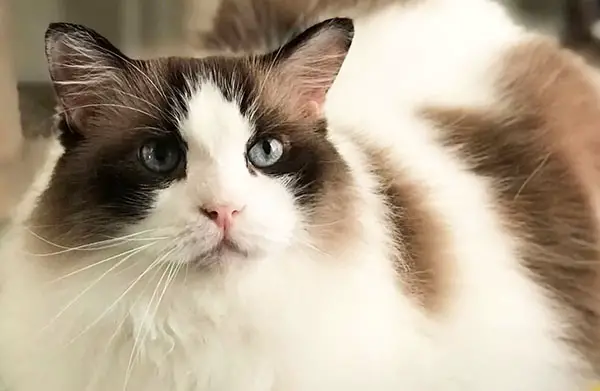Unfortunately, Ragdolls are not considered hypoallergenic.
While they may shed less than other cats, they still produce dander and saliva that can trigger allergies. Ragdolls are a popular breed known for their affectionate and docile nature.
They are often described as “puppy-like” in their behavior and are great with children and other pets. However, consider the risks before bringing a Ragdoll into your home if you have allergies.
While they may be less likely to trigger allergies than other breeds, they are not a guaranteed solution for allergy sufferers.
What Does Hypoallergenic Mean?
Hypoallergenic is a substance that is less likely to cause an allergic reaction. In the case of cats, hypoallergenic breeds produce fewer allergens than other breeds.
However, note that no cat breed is 100% hypoallergenic. Cat allergies are caused by a specific protein called Fel d 1, found in a cat’s saliva, skin, and urine.
When a cat grooms itself, the protein spreads throughout its fur and dries, becoming airborne and causing an allergic reaction in susceptible individuals.
While hypoallergenic cat breeds may produce less of this protein, they still produce it to some extent.
Therefore, if you have severe cat allergies, spend time with the specific cat you’re considering getting before deciding. Some common hypoallergenic cat breeds include the Siberian, Balinese, and Sphynx.
However, note that even within a breed, individual cats can produce varying levels of allergens.

Are Ragdoll Cats Hypoallergenic?
Ragdoll cats are not hypoallergenic, but they may be better for people with allergies than other breeds. Ragdolls do not have an undercoat, which means they shed less than other breeds.
This can help reduce the amount of allergens in the air, but it does not make them hypoallergenic. The proteins in their saliva, urine, and dander can still cause allergic reactions in some people.
However, some people with allergies may be able to tolerate Ragdoll cats better than other breeds.
This is because they produce less loose fur than some other breeds, which can help reduce the amount of allergens in the air.
Additionally, Ragdolls are more laid back and less likely to trigger allergies through stress or anxiety.
If you have allergies and are considering getting a Ragdoll cat, spend time with one before deciding.
Spend time petting and interacting with the cat to see if you experience any allergic reactions.
You may also want to talk to your doctor about allergy medications or other treatments to help manage your symptoms.
Factors Influencing Cat Allergies
Here are some of the most important factors to consider:
Cat’s Age
Kittens are less likely to cause allergies than adult cats. This is because kittens have not yet developed the proteins that cause allergic reactions.
Adopting a kitten rather than an adult cat may be best if you have severe allergies.
Cat’s Diet
A cat’s diet can also affect the severity of allergies. Feeding your cat a high-quality diet rich in nutrients can help reduce the dander they produce.
This can help reduce the severity of allergic reactions.
Environment
The environment in which your cat lives can also play a role in the severity of allergies.
Keeping your home clean and free of dust, pollen, and other allergens can help reduce the amount of allergens your cat is exposed to.
Regularly cleaning your cat’s litter box and grooming your cat can also help reduce the amount of dander they produce. Overall, remember that no cat breed is entirely hypoallergenic.
While Ragdoll cats are less likely to cause allergies than other breeds, they can still cause allergic reactions in some people.
If you have severe allergies, it’s essential to consult with your doctor before adopting a cat.
Managing Cat Allergies
Here are some ways to manage cat allergies:
Regular Grooming
Regular grooming will keep shedding down to a minimum. Brush your Ragdoll cat’s coat once or twice weekly to remove loose hair and dander.
Bath your cat every few months to remove any allergens on their skin.
Air Purifiers
Air purifiers can help remove allergens from the air in your home. Look for a purifier with a HEPA filter, which can trap tiny particles like pet dander.

Place the purifier in the room where your cat spends the most time.
Allergy Medication
Allergy medication can also help manage cat allergies. Over-the-counter antihistamines can help relieve symptoms like sneezing and itching.
If your allergies are severe, discuss prescription medication options with your doctor.
Remember, no cat breed is truly hypoallergenic. Ragdoll cats still produce allergens like dander and saliva, but they may be better suited for some allergy sufferers than other breeds.
With proper management techniques, you can still enjoy the company of a Ragdoll cat.
Frequently Asked Questions
Are Ragdoll cats hypoallergenic?
No, Ragdoll cats are not hypoallergenic. They produce the Fel d 1 protein in their dander and saliva, which can cause allergic reactions in some people.
However, people who are only allergic to pet dander may not have any reaction when exposed to a Ragdoll cat.
Are Siberian cats hypoallergenic?
Siberian cats are often hypoallergenic because they produce less Fel d 1 protein than other breeds.
However, no cat breed is entirely hypoallergenic, and some may still experience allergic reactions to Siberian cats.
Are Balinese cats hypoallergenic?
Balinese cats are not hypoallergenic. They produce the Fel d 1 protein in their saliva and skin, which can cause allergic reactions in some people.
Are Devon Rex cats hypoallergenic?
Devon Rex cats are often considered hypoallergenic because they produce less dander than other breeds. However, they still produce the Fel d 1 protein in their saliva and skin, which can cause allergic reactions in some people.
Are Cornish Rex cats hypoallergenic?
Cornish Rex cats are not hypoallergenic. They produce the Fel d 1 protein in their saliva and skin, which can cause allergic reactions in some people.
Are Sphynx cats hypoallergenic?
Sphynx cats are often considered hypoallergenic because they have no fur to shed. However, they still produce the Fel d 1 protein in their saliva and skin, which can cause allergic reactions in some people.
Additionally, some people may be allergic to the dust and oils that accumulate on their skin.

